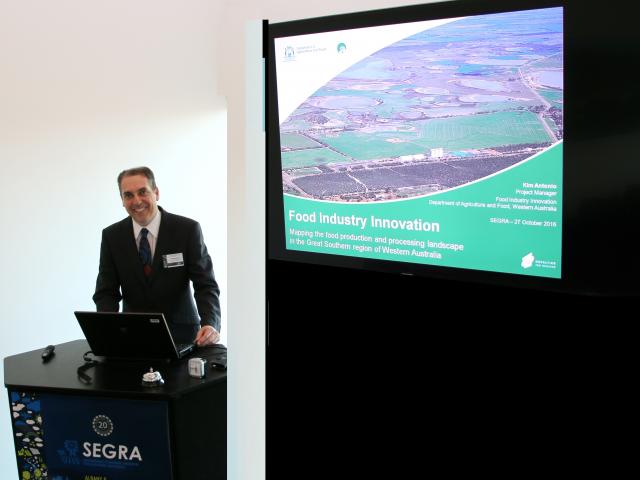Fast facts: Food Industry Innovation features at STOA and SEGRA conferences
Taking the message of the Food Industry Innovation project to the wider market took a big leap in the past two months with appearances at the Seizing the Opportunity Agriculture (STOA) conference in September and at the national Sustainable Economic Growth for Regional Australia (SEGRA) conference in October.

Food Industry Innovation Project Manager Kim Antonio addressed the 2016 Albany and Great Southern SEGRA conference to outline how this project would help create a more viable and sustainable future for regional agrifood businesses in the Great Southern.
He demonstrated that with a solid base of producing $1 billion of agricultural produce per year, the Great Southern was already contributing strongly to the economy but that there was more market share to capture.
The aim of the Department of Agriculture and Food, Western Australia’s (DAFWA) Food Industry Innovation project was to create more competitive and viable agrifood businesses in the region by identifying opportunities for collaboration in production and processing.
It will be done through identifying and capturing premium market opportunities that are currently being missed by some businesses.
Conducting the Target Market Opportunities Report for Western Australian premium products had been one such investment to identify these premium markets, through DAFWA’s Asian Market Success project. Results had shown there were 20 opportunities identified across nine food and beverage platforms in Asia for WA premium products including beverages, processed foods, dairy and eggs, some fruits and vegetables, seafood, meat, oils and grains.
Kim explained to the conference that commissioning a survey to create a food production and processing map of the Great Southern would be another way of identifying what the current and future capacity of the region would be.
The survey results would create a dynamic, multi-use set of data that would help with a whole-of-region strategy to gaining the most for the producers and processing businesses in the Great Southern.
“The Food Industry Innovation project wants to find out how to move from a commodity-focused sector to having a greater presence in the premium and value-added agrifood sector,” Kim said.
The project would also be looking at utilising the resources of the Western Australian (WA) government’s dedicated in-market trade officers to assist WA agrifood businesses in finding new markets and consumer groups predominantly in Indonesia, Singapore, India, China and the UAE.
